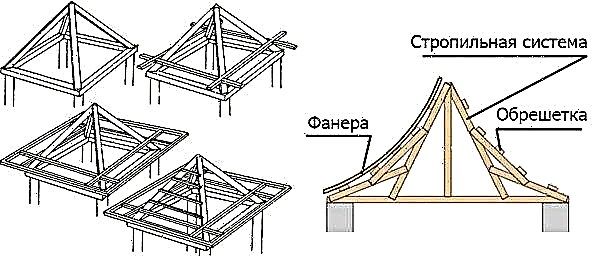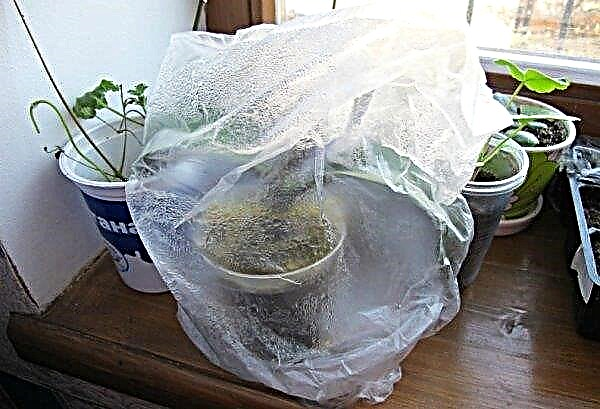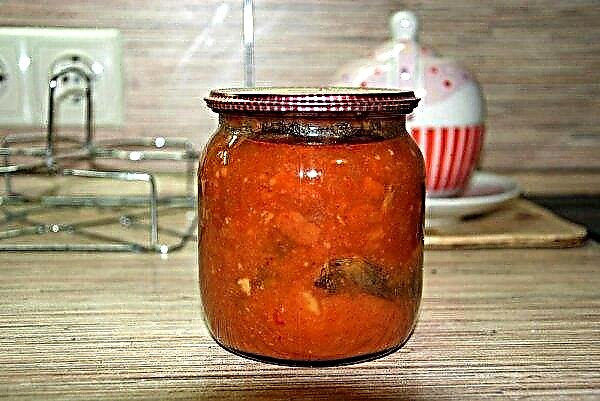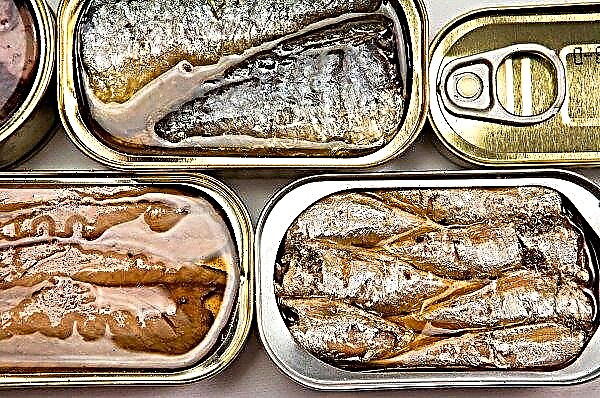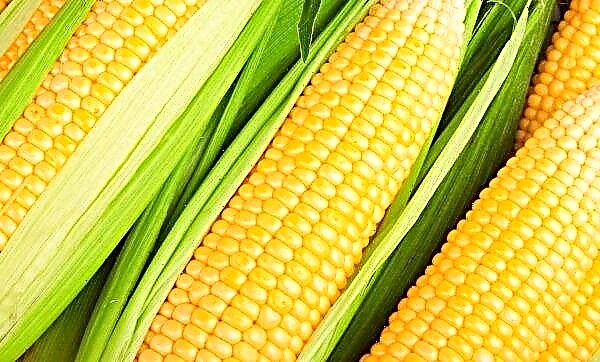Gardeners who grow tomatoes in greenhouses may experience cladosporiosis. The article will discuss the causes and signs of infection of tomatoes, methods of treatment and prevention, as well as recommendations on the cultivation of tomatoes in a greenhouse.
What is tomato cladosporiosis?
Cladosporiosis, or brown spotting, is a dangerous disease caused by fungi of the genus Cladosporium and affecting tomato leaves. More often from this disease, tomatoes in greenhouses or greenhouses suffer. It is not easy to get rid of brown spotting, as it continues to exist even in conditions of drought and with a strong decrease in temperature for about 10 months.
Among the main causes of cladosporiosis include:
- The natural location of some varieties of tomato.
- Environmental conditions - pathogens develop at temperatures above + 25 ° C and humidity more than 80%.
- Increased possibility of infection to tomatoes. The causative agents of this disease are different from ordinary fungal spores, they are called conidia and reproduce asexually. Brown spotting spreads in the form of dust, so work equipment, shoes, clothing or just a gust of wind can be a source of damage.
Did you know? The world leader in tomato production is China. The number of tomatoes grown in the country is about 16% of global production.
Kladosporiosis first affects the foliage of tomatoes with brown spots, in the future the whole plant can die without appropriate treatment.
Signs of defeat
An important factor in the successful treatment of tomato bushes affected by the fungus in the greenhouse is the timely identification of this disease.
The first signs of cladosporiosis are:
- the appearance of gray-brown spots on the inside and small yellow-green leaves on the outside during active growth and flowering seedlings;
- fetal growth retardation;
- drying leaves on the bushes.

The second stage of the disease is characterized by a cessation of access to the stem and roots of nutrients, resulting in a slowdown in the growth of bushes.
At the last stage of the disease, brown spotting with tomato, such irreparable changes occur:
- color change of fruits, they acquire a brown hue;
- rotting the bottom of the sheets;
- drying and curling of leaves.
Treatment features
It is possible to treat greenhouse tomatoes from cladosporiosis both with folk remedies and with chemical or biological agents. We will tell you more about them.
Chemicals
They differ in quick action, they are used when the disease has affected most of the plants.
For treatment, you can use such tools:Did you know? The largest greenhouse Eden is located in the UK. Its area is 22,000 m².
- Bravo or Neotec. In accordance with the instructions, prepare a solution with which to process the bushes. After 14 days, repeat the treatment to get rid of survivors after the initial processing of the spores.
- "Poliram". Dilute granules in water according to the instructions and treat the bushes. The duration of the drug is 3 weeks, during the growing season you can use it no more than 3 times.
- Home. Dissolve 40 g of the solution in 10 l of water and treat the bushes. Processing will give the plant a protective film that protects it for about 2 weeks.

Biological products
Not as dangerous as chemical, as they work on the surface and do not penetrate the fruits.
Among the biological preparations for brown spotting will help:
- "Fitoflavin 300". It is necessary to dilute 20 ml of the product in 10 l of water and treat the bushes.
- Strobi. Fungicide, but safe for insects and animals, therefore not as harmful as other chemicals. Dilute according to the instructions and process the tomatoes.
- Fitosporin. Safe microbiological agent. 2 g of the drug are taken per 10 l of water. Spraying is carried out 1 time in 2 weeks.
- "Pseudobacterin-2". A popular drug that fights against fungal diseases of vegetables. Dilute according to the instructions and treat the bushes.
Important! Even one bush affected by cladosporiosis can destroy all the others, so it is necessary to remove the diseased areas of the tomato, and, if necessary, the entire bush.
Folk methods of struggle
Treatment of greenhouse tomatoes for brown spotting with folk remedies is acceptable only at the initial stage of the disease.
When identifying the initial symptoms of the disease, it is necessary to apply one of the methods of processing plants:
- Iodine chloride. The penetration of the solution into the soil should be at a depth of about 10 cm. Dilute 40 drops of iodine and 30 g of potassium chloride in 10 l of water.
- Using whey. Add 1 liter of serum to 10 liters of water.
- Garlic tincture. In 10 l of water add 30 drops of iodine and 1 clove of garlic.
- Milk solution. Mix 500 ml of milk and 5 liters of water, add 15 drops of iodine.

Preventive measures
To minimize the development of brown spotting in the greenhouse, it is necessary to carry out preventive measures. Tomatoes need proper care and development conditions.
To do this, you must:
- provide humidity in the greenhouse not exceeding 70%;
- remove the possible causes of infection: remove rotting fruits, remove weeds, disinfect the soil;
- ensure the temperature in the greenhouse +22 .. + 23 ° C;
- regularly ventilate the greenhouse;
- adhere to crop rotation rules;
- place seedlings at the recommended distance so that thickening does not occur. With thickened bushes, the defeat of the disease occurs faster;
- comply with the recommended watering regime.
Important! It is not recommended to plant tomatoes in the same soil for several years in a row, this leads to the accumulation of pathogens in the soil.
Cladosporiosis-resistant greenhouse tomatoes
When choosing a tomato variety for planting in a greenhouse, it should be borne in mind that some of them are highly resistant to brown spotting.
Cladosporiosis practically does not affect such varieties:
- Pink Paradise F1. Indeterminate, the height of the bushes up to 2 m. Fruits of pink color weighing 125-135 g. Bushes need a garter, grown in one, sometimes two stems.

- Marissa F1. Indeterminate, the bushes grow up to 1.8 m, so they need a garter, also need to be stepson. The fruits are red, slightly flattened, each weighs an average of 150 g.

- Doll Masha F1. Determinant, the height of the bush is not more than 80 cm. The fruits are round, pink in color, each weighing 200–250 g. Tomatoes can easily transport.

- Vezha. Indeterminate variety, bush reaches a height of 1.6–1.8 m. Fruits are rounded flat, red, weigh 80–120 g.

- Funtik F1. Refers to indeterminate, bushes reach a height of up to 1.5 m. The fruits are ribbed, red, their weight is 130-200 g.

- Octopus F1. An indeterminate variety, the bush can grow up to 5 m, therefore, it needs powerful support. Fruits weigh an average of 250 g.

Recommendations for growing tomatoes in a greenhouse
In order to achieve a high yield of tomatoes in the greenhouse and minimize the appearance of brown spotting and other diseases, it is necessary to adhere to some recommendations:
- Prepare the beds 5-7 days before transplanting the seedlings into the greenhouse. They should be 60–90 cm wide and 25–30 cm high. Also, passages should be made between the beds, the width of which will be about 70 cm.
- The soil should be clay or loamy, it is necessary to add humus, peat and sawdust in equal parts. On 1 m² of land you need 3 buckets of the mixture.
- At the time of planting seedlings, the ground should be warmed up, and the height of the bushes to reach 30–35 cm. It is better to plant seedlings in early May.
- 2 weeks after planting, tomatoes need to be fed. To prepare the fertilizer, you need to add 1 tablespoon of nitrophoska and 500 ml of liquid mullein to 10 l of water.
- Water the tomatoes once every five days. It is necessary to control the temperature of water for irrigation, it should be +20 ... + 22 ° С.












